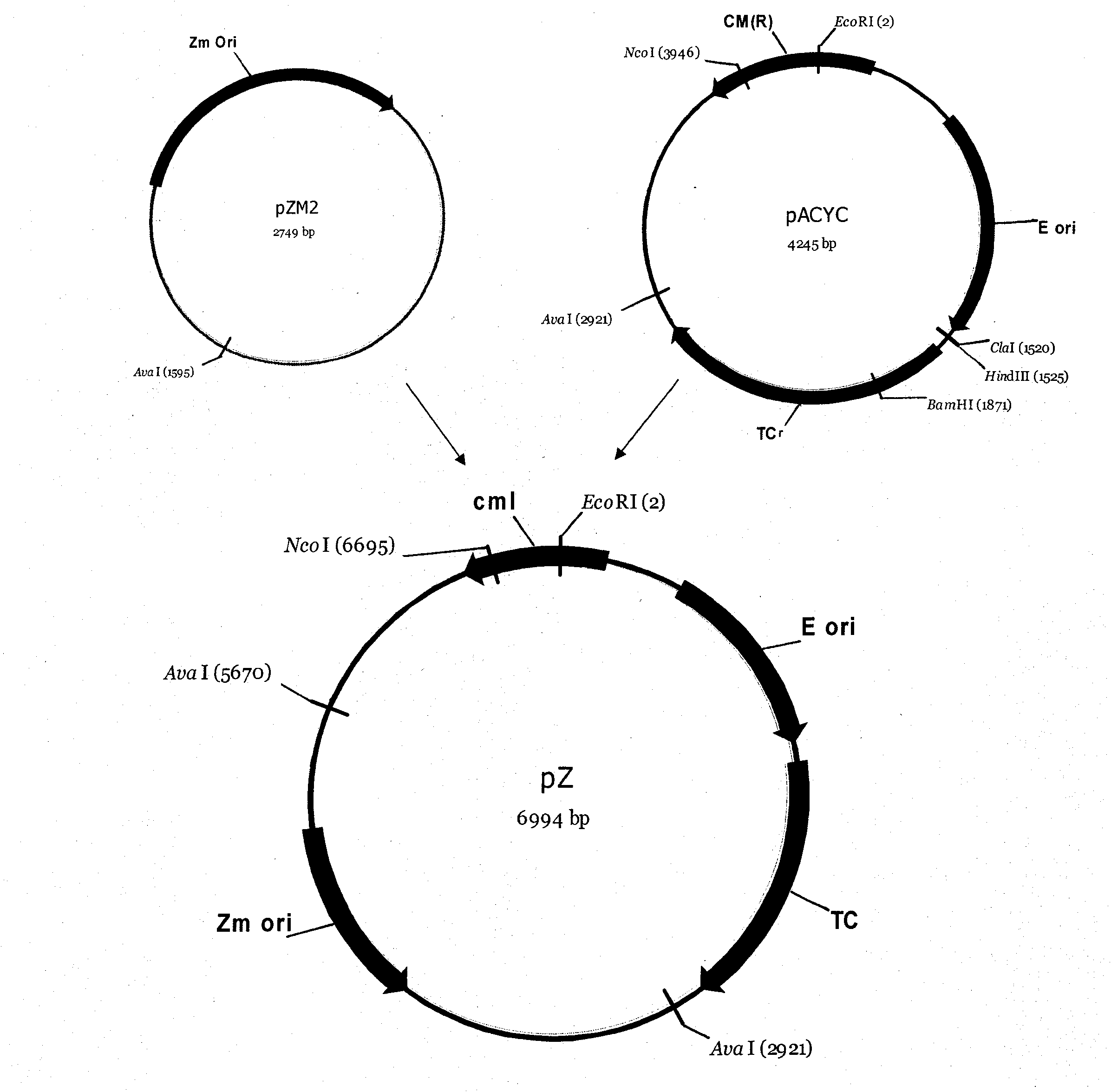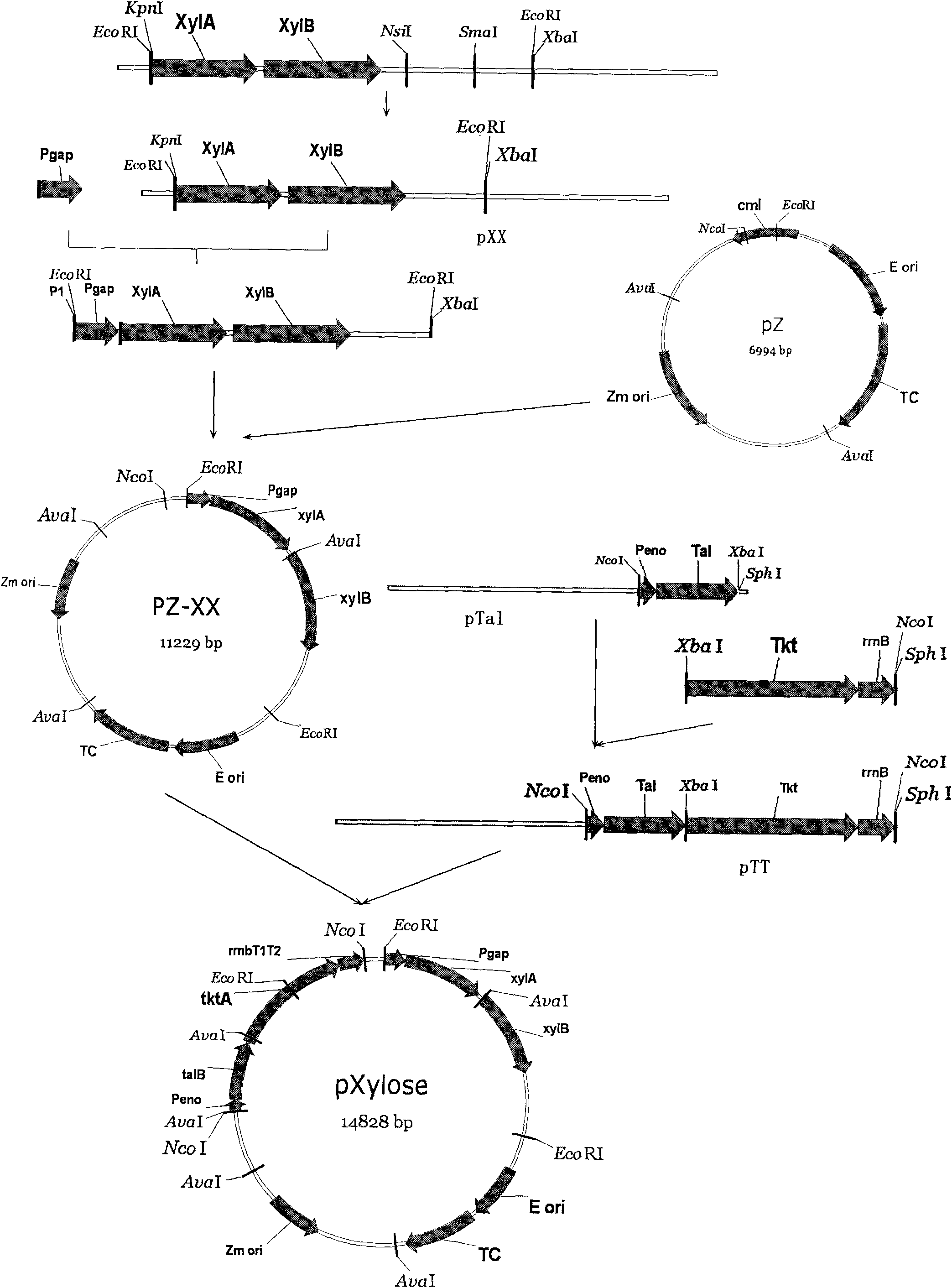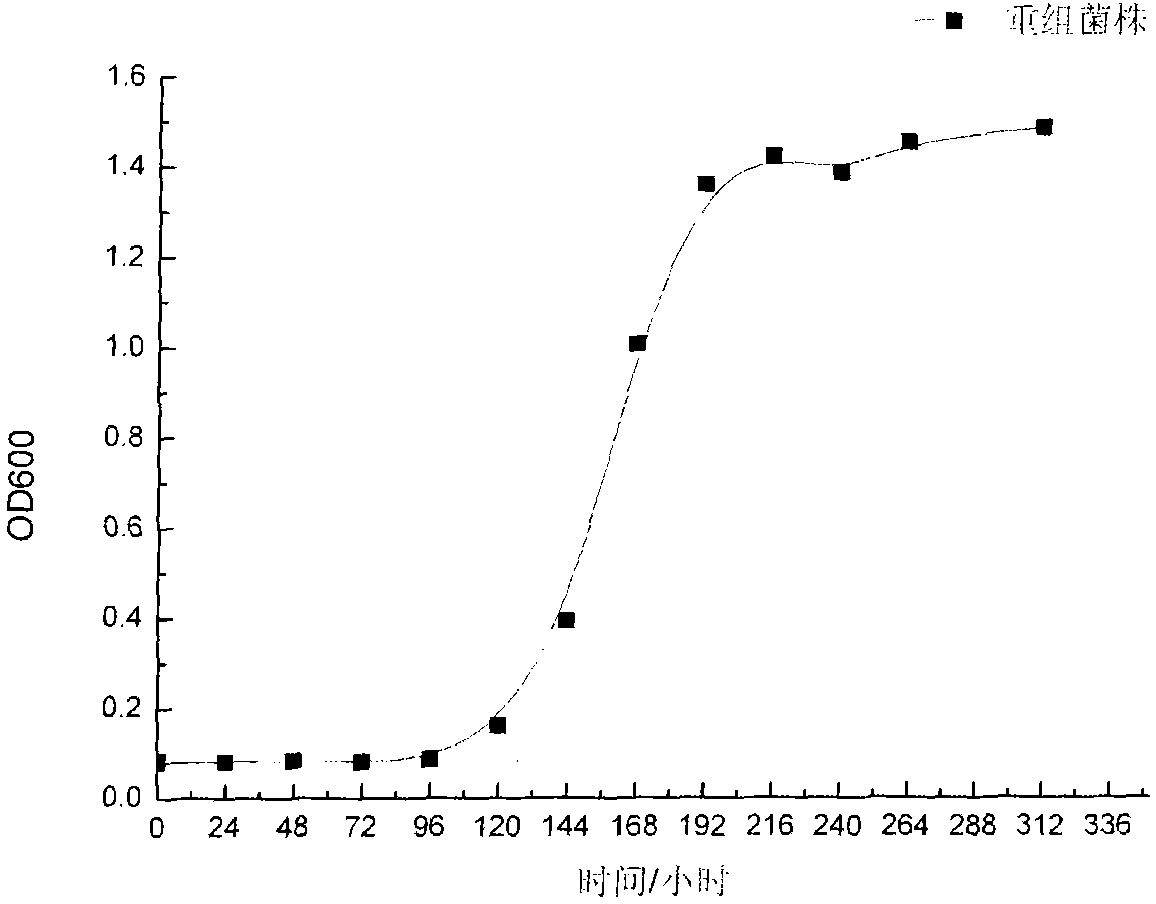Recombinant zymomonas mobilis capable of producing ethanol by using xylose and fermentation method thereof
A technology of Zymomonas and movement, applied in the field of bioengineering, can solve problems such as increasing the expression of exogenous genes, and achieve the effect of solving the energy crisis
- Summary
- Abstract
- Description
- Claims
- Application Information
AI Technical Summary
Problems solved by technology
Method used
Image
Examples
Embodiment 1
[0044] Example 1 The construction of the shuttle expression vector pZ that can be replicated in Escherichia coli and Zymomonas mobilis: first extract the plasmid of Z.mobilis (ATCC10988) with SDS alkaline lysis method (Sam Brook, 2002), and use Ava I enzyme After cutting the plasmid, electrophoresis was performed to recover a 2.7kb plasmid linear fragment, and after ligation, the pZM2 plasmid of Zymomonas mobilis was obtained. Escherichia coli plasmid pACYC was extracted by SDS alkaline lysis method. Based on Escherichia coli plasmid pACYC and Zymomonas mobilis plasmid pZM2, it was digested with AvaI and ligated into plasmid pZ. pZ contains the origin of replication for Escherichia coli and Zymomonas mobilis ( figure 1 ), which can replicate in the above two host bacteria.
Embodiment 2
[0045] Example 2 Construction of the shuttle vector pXylose expressing xylose metabolism genes
[0046] Genomic DNA of Escherichia coli K12 and Zymomonas mobilis (ATCC NO.31821) were extracted with the bacterial genome extraction kit of Tiangen Company;
[0047] Using the genome of Zymomonas mobilis (ATCC NO.31821) as a template, using the sequences described in SEQ ID NO.1 and SEQ ID NO.2 in the sequence table as PCR primers, amplifying the promoter Pgap of Zymomonas mobilis;
[0048] Using Escherichia coli K12 genomic DNA as a template, using the sequences described in SEQ ID NO.3 and SEQ ID NO.4 in the sequence table as PCR primers, amplifying the genes encoding xylose isomerase XylA and xylokinase XylB and the untranslated regions , the amplified product was digested with Kpn I and Xba I and ligated into the pUC19 plasmid, then digested with Nsi I and Sma I, blunt the sticky ends and ligated to obtain the vector pXX;
[0049] Using pXX as a template, using the sequences d...
Embodiment 3
[0067] The acquisition of embodiment 3 recombinant strains
[0068] Plasmid pXylose was extracted with the large extraction plasmid kit of Promega Company. Inoculate the culture of Zymomonas mobilis CP4 (CICC10232) into 50ml RM liquid medium at 0.5% or 1.5% inoculum size, and culture statically at 30°C until OD 600 =0.5; centrifuge at 6000rpm for 5min, collect the thallus, wash 2 or 4 times with 10% aqueous glycerol solution in ice bath, suspend and mix evenly with 2ml 10% glycerin aqueous solution by volume, to obtain Competent cells: Take 40μl competent cells, add 1μg plasmid pXylose to mix, transfer to a sterile pre-cooled 1mm electric shock cup, 1800V electric shock, quickly add 450ul RM body culture medium, mix well and transfer to a 1.5ml sterile centrifuge tube In the medium, let stand at 30°C for 14 hours (12 hours or 17 hours can also be selected), spread the culture on the RM solid medium screening plate containing 20 μg / ml tetracycline, and place it upside down in ...
PUM
 Login to View More
Login to View More Abstract
Description
Claims
Application Information
 Login to View More
Login to View More - R&D
- Intellectual Property
- Life Sciences
- Materials
- Tech Scout
- Unparalleled Data Quality
- Higher Quality Content
- 60% Fewer Hallucinations
Browse by: Latest US Patents, China's latest patents, Technical Efficacy Thesaurus, Application Domain, Technology Topic, Popular Technical Reports.
© 2025 PatSnap. All rights reserved.Legal|Privacy policy|Modern Slavery Act Transparency Statement|Sitemap|About US| Contact US: help@patsnap.com



